Top Lists
10 Oldest Mosques in The World
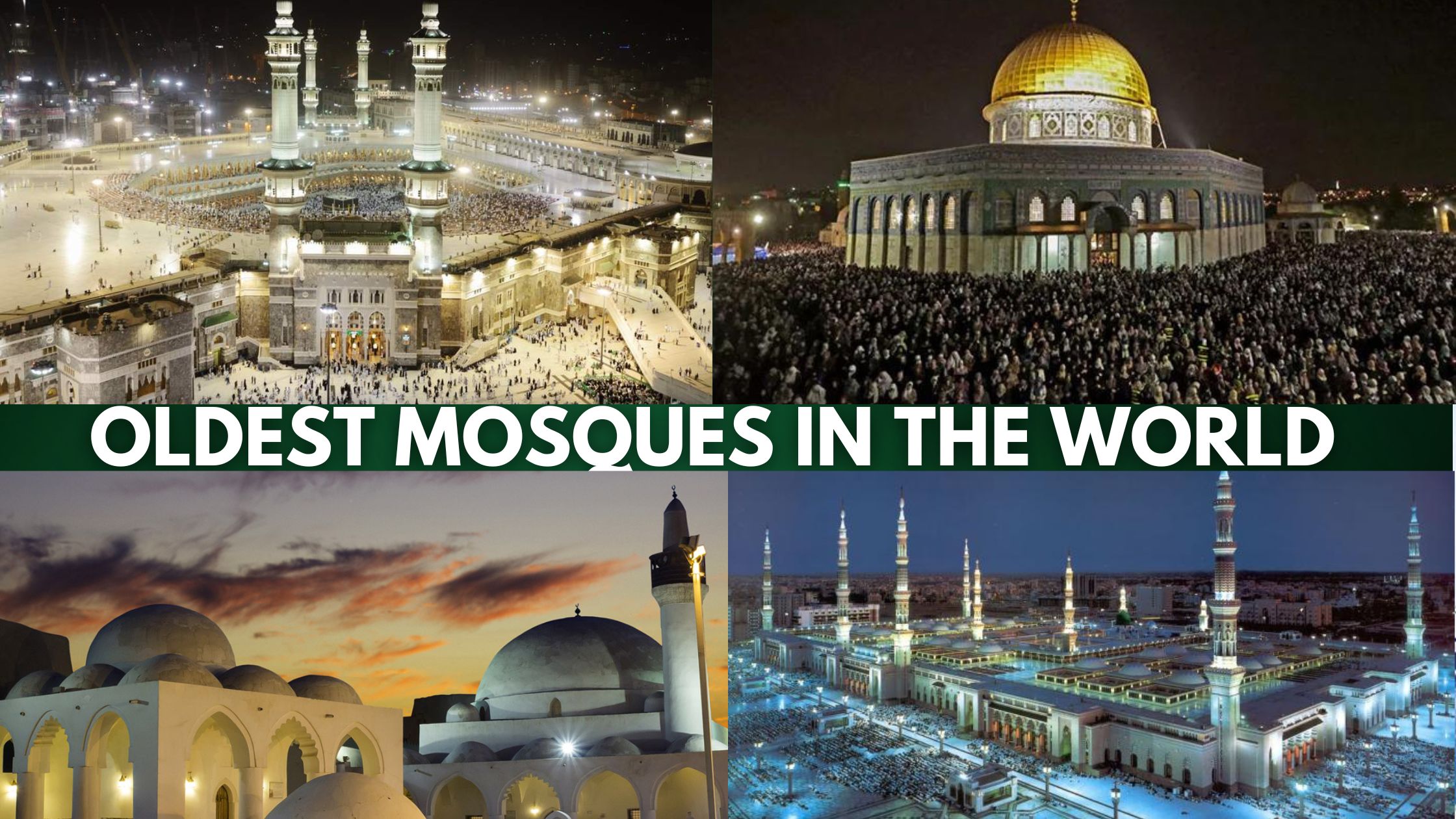
A mosque or masjid is a place of prayer for Muslims. Mosques are usually covered buildings but can be any place where prayers are performed, including outdoor courtyards. The first mosques were simple places of prayer for Muslims and may have been open spaces rather than buildings.
As we turn our attention to the most ancient mosques across the globe, these historical sanctuaries possess a momentous role in the narrative of Islamic architectural evolution. Our focus shifts to the catalog of the ten oldest mosques that have endured through the ages.
In this article, RNN presents an inventory of the ten earliest mosques worldwide. These mosques stand as remarkable structures, showcasing the history of Islamic architecture and devotion.
Watch the video below for a quick overview of the world’s oldest mosque
Let’s explore the list of the ten oldest Masjid that have endured through time.
10. The Masjid Of Uqba, Kairouan (Tunisia)
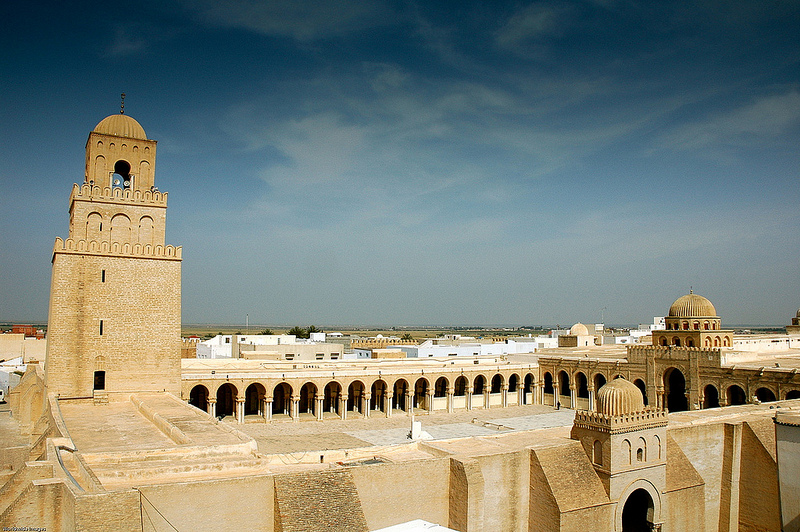
The Great Masjid of Kairouan, also known as the Mosque of Uqba, is located in Kairouan, Tunisia. It’s a significant Islamic monument in North Africa. General Uqba ibn Nafi established it in 670 AD during the founding of Kairouan. The mosque covers over 9,000 square meters and has a perimeter of about 405 meters. It includes a prayer hall, a marble courtyard, and a square minaret. The mosque is one of the oldest Islamic places of worship and influenced later Maghreb mosques. It’s known for its horseshoe arch.
Later, in the 9th century, the Aghlabids expanded the mosque. Its fame contributed to Kairouan’s development. The Masjid’s scholars formed a university, similar to the University of Paris in the Middle Ages, focusing on Islamic and secular studies. As Kairouan declined, intellectual activity shifted to the University of Ez-Zitouna in Tunis.
9. Palaiya Jumma Palli Masjid, Kilakarai (India)
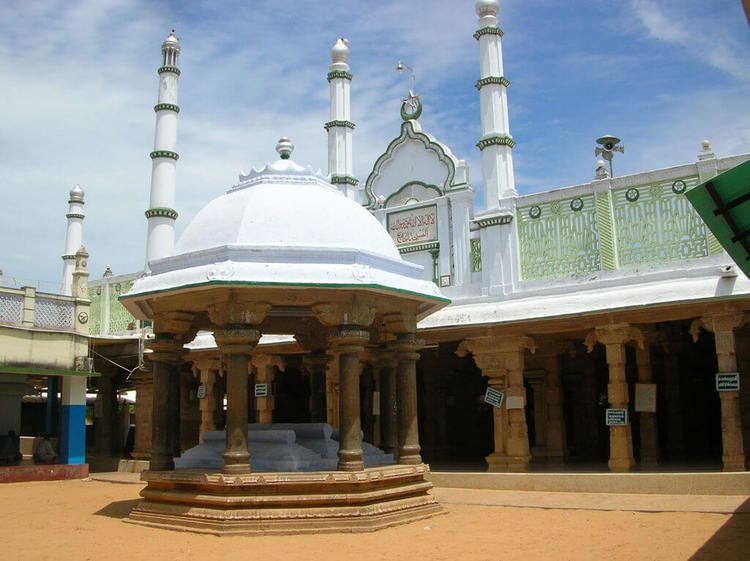
Palaiya Jumma Palli, also known as Meen Kadai Palli, is a masjid situated in Kilakarai, Tamil Nadu, India. It was constructed around 628-630 AD and is considered one of the world’s oldest mosques. Together with Cheraman Juma Masjid in Kodungallur, Kerala, and Barwada Mosque in Ghogha, Gujarat, it was India’s first mosque.
With a history of over 1000 years, it is located in Kilakarai, an ancient port town in Tamil Nadu known for its Islamic culture. Originally built by Yemeni merchants during the pre-Islamic period in the Pandiya kingdom, it was ordered by Baadhan (Bazan ibn Sasan), the Governor of Yemen during the time of Prophet Muhammad after they embraced Islam between 625-628 AD. The mosque was reconstructed in the 11th century after a conflict. Notable Islamic figures like Ibn Battuta, Nagoor Abdul Cadir, and Sultan of Ottoman Murad, among others, visited the mosque, with Ibn Battuta mentioning in his travel notes that the people there lived as if they were in the Arab land.
8. Cheraman Juma Masjid, Kerala (India)
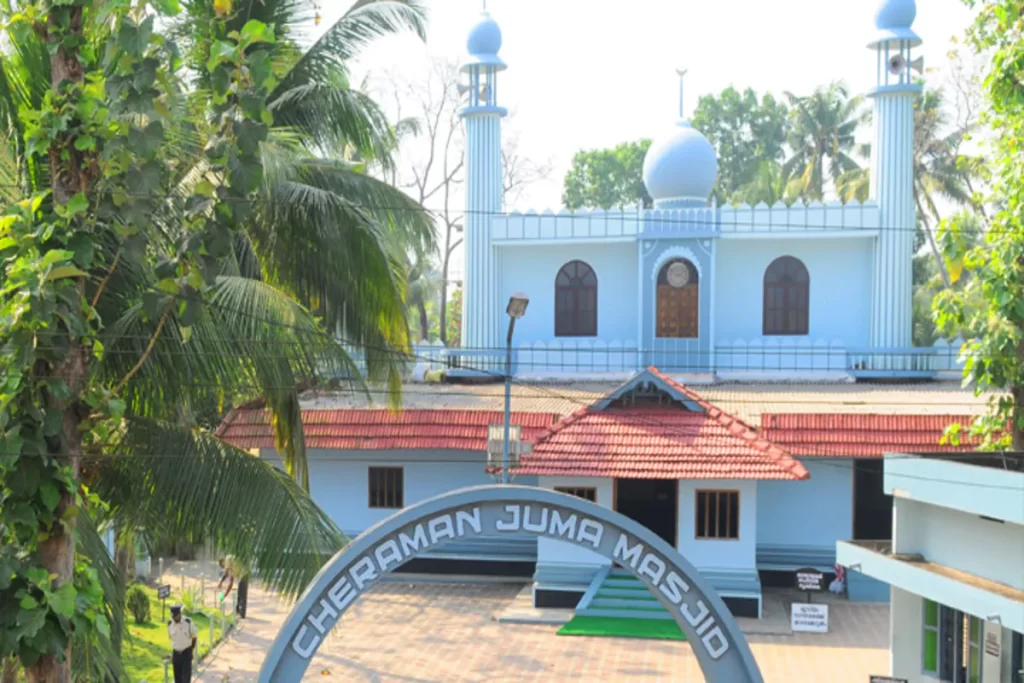
The Cheraman Juma Masjid is located in Methala, Kodungallur, Thrissur, Kerala, India. According to legend, it was constructed in 629 CE, making it the oldest mosque still in use in the Indian subcontinent. The mosque was ordered to be built by the successor of Cheraman Perumal, the Chera King of Kerala. It follows Kerala’s architectural style with hanging lamps, which adds to the credibility of its historical claims.
The mosque was destroyed in 1504 by the Portuguese during an attack on Kodungallur. After the attack, the old building was reconstructed sometime between the mid-16th and early 17th centuries. In 1984, modern corridors and halls were added to the mosque. These newer extensions hide most of the original exterior features of the old building.
7. Jawatha Masjid, Al-Ahsa (Saudi Arabia)
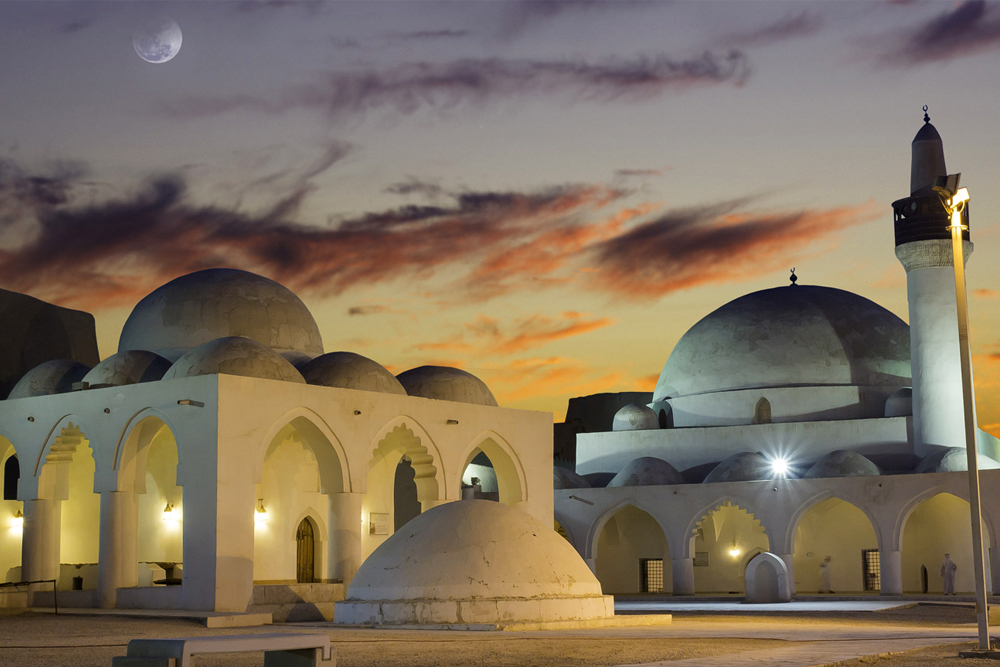
Jawatha Mosque, also known as Masjid Jawāthā, is situated in Jawāthā, around 12 km northeast of Hofuf, Al-Ahsa, Saudi Arabia. It is the oldest mosque in eastern Arabia and is mostly in ruins, but still used for prayers. The mosque was constructed by the Bani Abd al-Qays group, who lived there during the early Islamic period. It is believed to be the first masjid in the Eastern Province and hosted the second Friday congregation prayer in Islam after the one in the Prophet’s Mosque in Medina. Legend has it that the stolen Hajr Al-Aswad (Black Stone) was housed here for about 22 years when taken by the Qarmatians.
Although most of the original mosque is lost and at risk of collapsing, a few arches from around the 9th century AD remain. These remnants include two keel arches from an arcade of the masjid and part of the qibla wall with three keel-arch niches. One niche is larger and serves as the mihrab, projecting from the outer side of the wall. In recent times, before 1983, these remains were uncovered from sand, enclosed with concrete walls, and protected by a roof.
6. Huaisheng Masjid, Guangzhou (China)
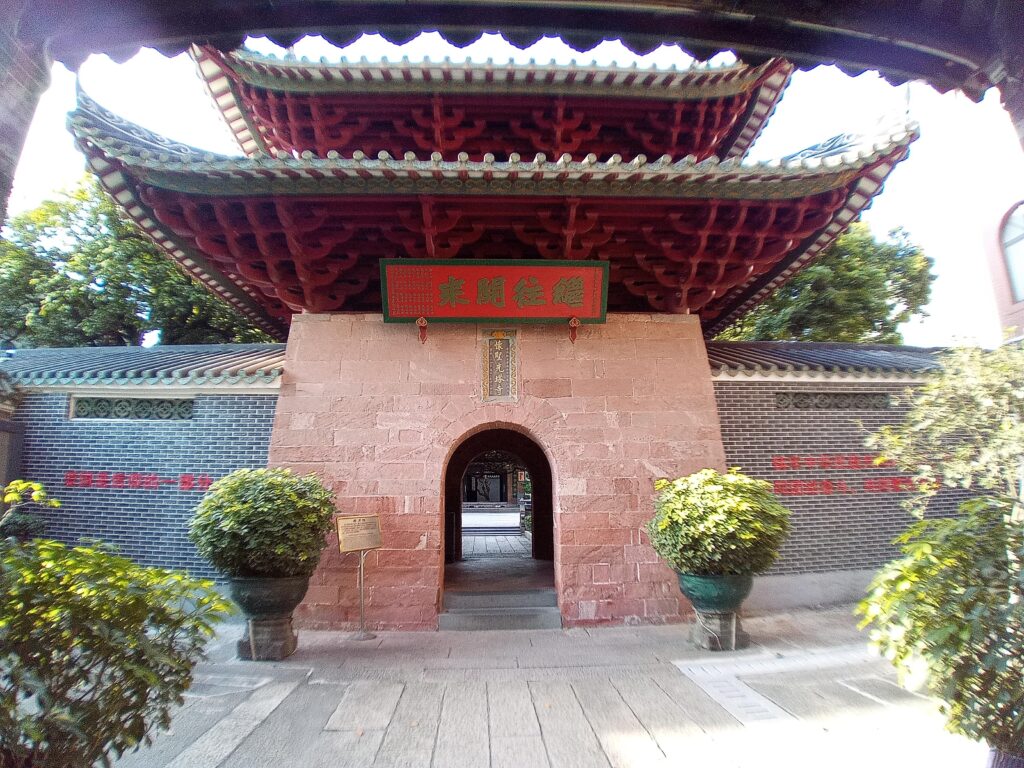
The Huaisheng Mosque in Guangzhou, also known as the Lighthouse Masjid, is the main mosque in the city. It has been rebuilt many times and is believed to have been originally constructed over 1,300 years ago, making it one of the world’s oldest mosques. One distinctive feature is its 36-meter pointed minaret called Guangta or Kwangtah, sometimes referred to as the “Plain Pagoda” due to its simple design. This minaret is similar to those found in places like the Khan’s Mosque in Russia. In 1981, Tim Severin’s crew recreated Sinbad the Sailor’s voyage and visited the mosque.
According to old Chinese Muslim manuscripts, the mosque was built in 627 by Sa’d ibn Abi Waqqas, a Companion of the Prophet, although there is no historical evidence of his visit. Scholars agree that Muslims likely arrived in China during the 7th century and major trade centers probably had their first mosques built during the Tang dynasty, despite the lack of reliable sources confirming their existence.
5. Masjid Al-Qiblatain, Medina (Saudi Arabia)
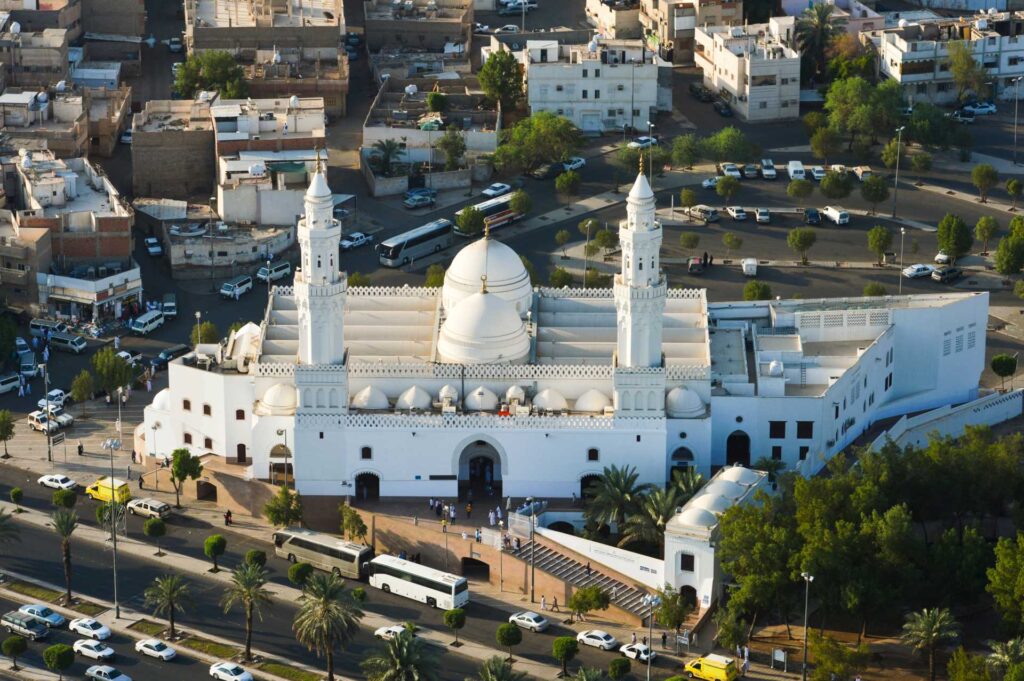
The Masjid al-Qiblatayn also spelled Masjid al-Qiblatain, is a mosque in Medina. Muslims believe it’s where Muhammad received the command to change the prayer direction from Jerusalem to Mecca. Sawad ibn Ghanam ibn Ka’ab built it in 623 CE. The Masjid had two mihrabs showing different prayer directions.
In 1987, King Fahd had the mosque torn down and rebuilt. The old niche facing Jerusalem was removed, and the one facing Mecca was kept. The Qiblatayn Mosque is one of Muhammad’s early mosques, along with the Quba’a Mosque and Masjid an-Nabawi. The Great Mosques of Mecca and Jerusalem are linked to earlier Prophets in Islamic thought.
4. Al-Masjid an-Nabawi, Medina (Saudi Arabia)
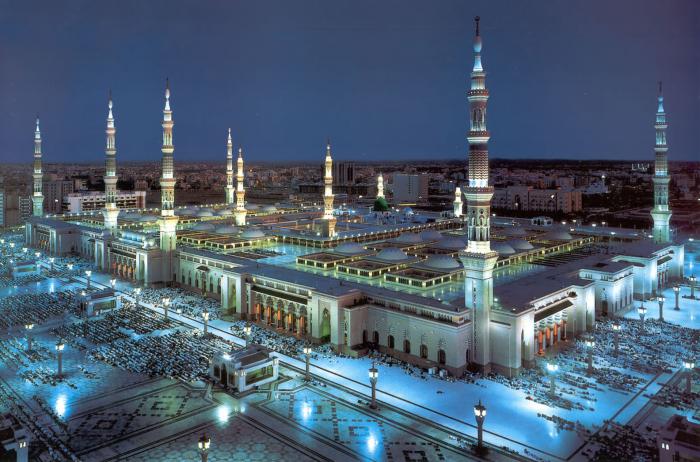
The “Prophet’s Masjid,” also called Al-Masjid an-Nabawī in Arabic, is the second mosque constructed by the Islamic prophet Muhammad in Medina, Saudi Arabia. It’s the second largest mosque in Islam after Masjid al-Haram in Mecca and a significant pilgrimage site under the Custodian of the Two Holy Mosques.
Muhammad played a role in building the mosque, acquiring land from orphans named Sahl and Suhayl. Despite their offer of gifting the land, Muhammad insisted on paying a fair price, which was covered by Abu Ayyub al-Ansari, who became the endower of the mosque. The mosque initially served as a gathering place, court, and school. It had a pulpit for Quran teaching and Friday sermons by Muhammad.
The mosque’s expansion, especially under the Umayyad caliph Al-Walid I, added the resting place of Muhammad, Abu Bakr, and Umar ibn Al-Khattab. Notably, the Green Dome, originally Aisha’s house, holds Muhammad’s tomb. Many Hajj pilgrims also visit this site in Medina.
In 1909, it was illuminated with electrical lights, a first for the Arabian Peninsula. Eunuchs guarded the mosque until recently, with only five remaining by 2015. It’s usually open to visitors and was only closed once during the 2020 COVID-19 pandemic as Ramadan neared.
3. Masjid Al-Quba, Medina (Saudi Arabia)
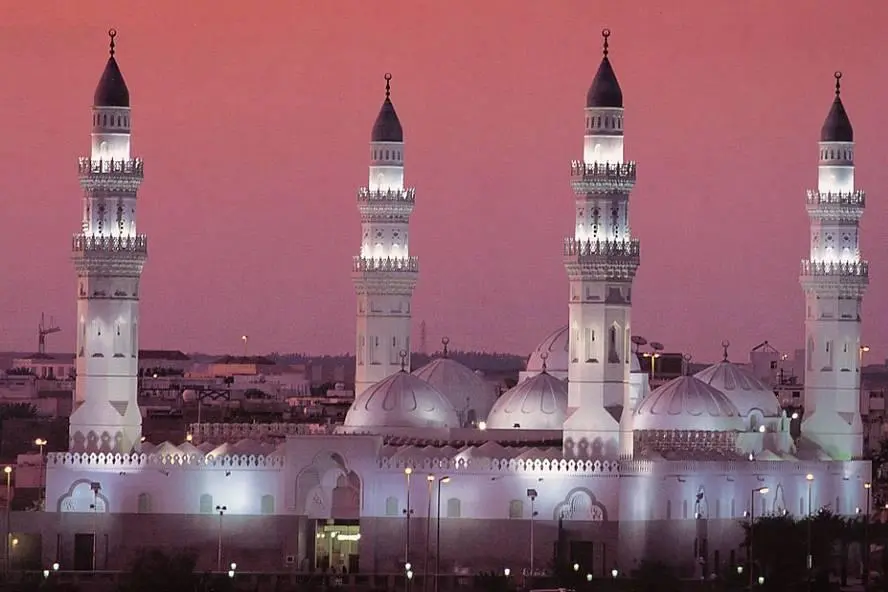
The Quba Masjid is situated in Medina, Saudi Arabia. It was constructed during Muhammad’s time in the 7th century C.E. It’s believed to be the world’s first mosque, built on his initial day in Medina. Muhammad himself started the construction, and his companions finished it. Muhammad spent two weeks praying in the mosque, awaiting Ali’s arrival from Mecca. Performing a short prayer and ablution at home, then praying in the Quba Mosque, is like doing a minor pilgrimage.
Muhammad used to visit every Saturday, advising others to do the same for rewards similar to an ‘Umrah. The mosque was initially located 6 kilometers away from Medina in the village of Quba before being encompassed by the expanding city.
2. Masjid Al-Aqsa, Jerusalem (Palestine)
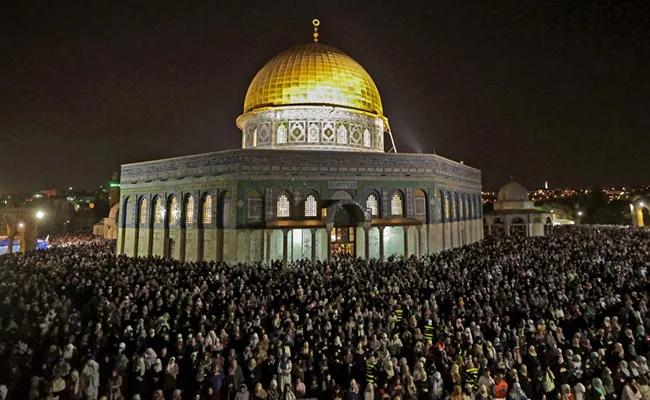
The Al-Aqsa Masjid, also known as Jāmiʿ al-Aqṣā, is a congregational mosque in Jerusalem’s Old City. It’s part of the larger Al-Aqsa compound, also called al-Ḥaram al-Sharīf or Temple Mount. Originally, a small prayer house was built on the compound during the Rashidun or Umayyad rule. The present mosque, located on the compound’s south wall, was constructed by Umayyad caliph Abd al-Malik or al-Walid I, along the same axis as the Dome of the Rock. Destroyed in 746 and rebuilt in 758 by Abbasid caliph al-Mansur, it was expanded upon in 780 by al-Mahdi. Later, the mosque was destroyed again in the 1033 earthquake and rebuilt by Fatimid caliph al-Zahir. Throughout time, various Islamic dynasties added to the mosque’s structure.
The mosque had different roles under various rulers, including being used as a palace by Crusaders and later restored to its mosque function under Saladin in 1187. It underwent further renovations by Ayyubids, Mamluks, Ottomans, and others. Currently, it’s under the administration of the Jerusalem Islamic Waqf. The mosque is situated near significant historical and holy sites of Judaism and Christianity, making the entire area geopolitically important and a focal point in the Israeli–Palestinian conflict.
1. Masjid Al-Haram, Mecca (Saudi Arabia)
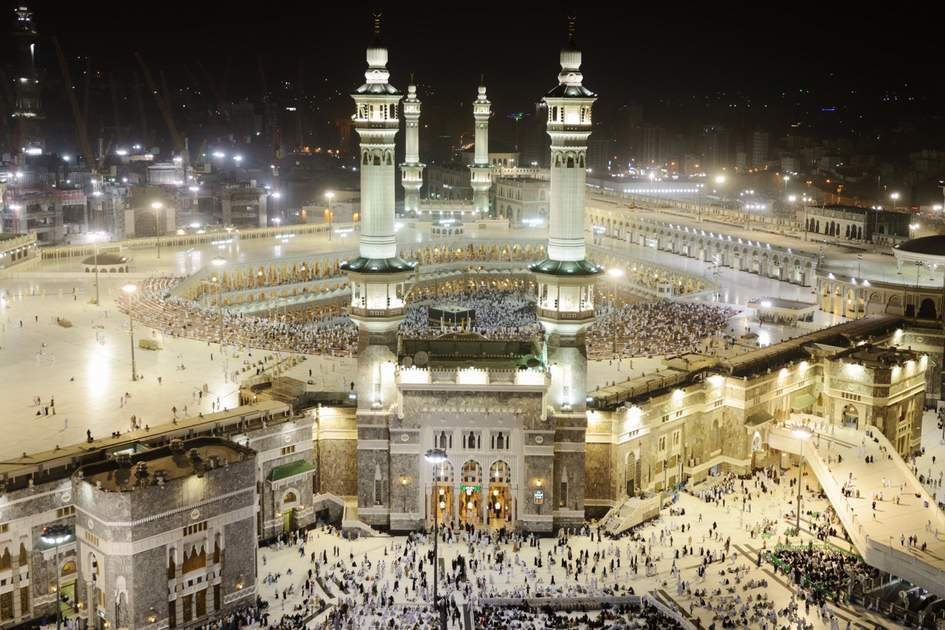
The first oldest mosque is Masjid Al-Haram in Mecca, Saudi Arabia. Also called the Grand Mosque, it encloses the Kaaba and is a pilgrimage site for Muslims. The Hajj pilgrimage and the ʿUmrah are done here. The main rituals involve circling the Kaaba. The mosque includes the Black Stone, Zamzam Well, Maqam Ibrahim, and Safa and Marwa Hills.
As of August 2020, it’s the world’s largest mosque, with a history of renovations. It’s controlled by the Saudi Arabian King, the Custodian of the Two Holy Mosques. It competes with Massawa’s Masjid of the Companions and Medina’s Quba Mosque as one of the oldest mosques. Islamic tradition sees Islam as predating Muhammad, attributed to Abraham who built the Kaaba, the first masjid. Other scholars believe mosques emerged in Muhammad’s time, like the Mosque of the Companions or the Quba Mosque.
